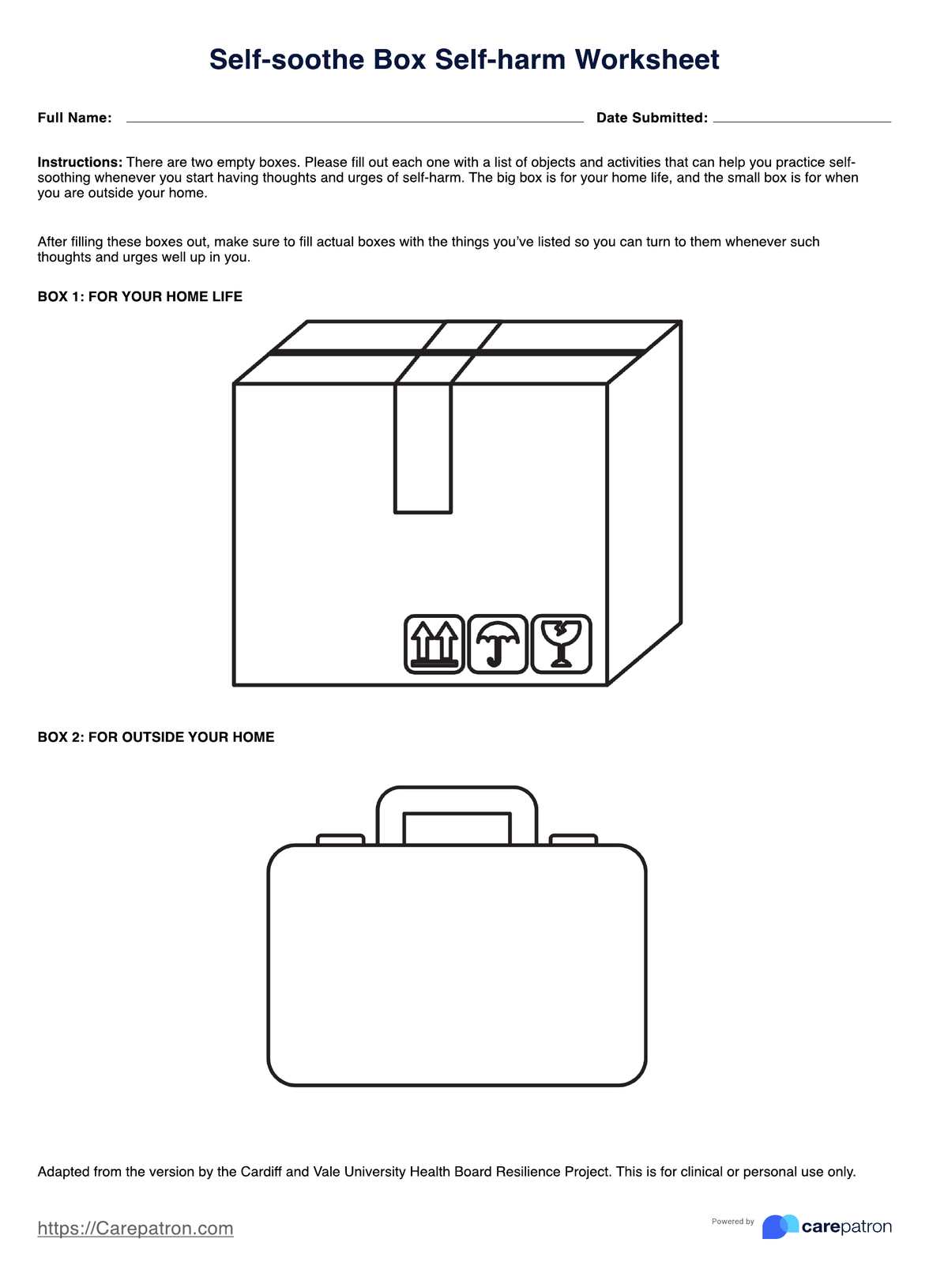It depends on the person. Some may find it easy and create lists in just a few minutes. Some may take an hour or more, and they may require help from professionals, loved ones, or friends.

Self-soothe Box Self-harm Worksheet
Help your patient think of ways to manage their urge to self-harm with the Self-soothe Box Self-harm Worksheet!
Self-soothe Box Self-harm Worksheet Template
Commonly asked questions
You personalize the Self-soothe boxes. If you find one or more of the things you currently have listed don’t do anything for you, you are more than welcome to swap them for something else. It’s a matter of determining what’s best for you.
Yes! You can definitely download a copy! We hope it helps you! Though, if your thoughts and urges of self-harm have greatly impacted you, we recommend that you see a professional so you have an expert to help you work through such thoughts and urges.
EHR and practice management software
Get started for free
*No credit card required
Free
$0/usd
Unlimited clients
Telehealth
1GB of storage
Client portal text
Automated billing and online payments











